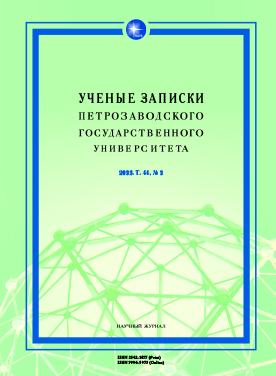СТАНОВЛЕНИЕ И РАЗВИТИЕ ФИЗИЧЕСКОЙ КУЛЬТУРЫ И СПОРТА В КАРЕЛИИ
FORMATION AND DEVELOPMENT OF PHYSICAL CULTURE AND SPORTS IN KARELIA
Author(s): Elena A. Kalinina, Larisa M. KieleväinenSubject(s): Cultural history, History of ideas, Local History / Microhistory, Social history, Sports Studies
Published by: Петрозаводский государственный университет
Keywords: sports, physical education; sport competitions; Supreme Council of Physical Culture; Committee for Physical Culture; Karelia;
Summary/Abstract: The relevance of addressing the problems of the history of physical culture and sports is due to the special attention of modern society to the issues of personal development, health protection and promotion, preparing young people for work, and increasing creative activity. However, in modern Russia, the potential of physical culture and sports is not fully implemented for solving socio-economic, educational and health problems. The article deals with the problems of creating a system of management of physical culture and sports in Karelia (1918–1939), tracks the development of mass physical culture movement, and discusses the development of mass defensive sports in the late 1930s. The novelty of the research is determined by introducing unpublished sources extracted from the funds of the National Archives of the Republic of Karelia into scientific circulation. For the first time, the authors analyze archival documents and materials from periodicals to investigate the activities of the Council of Physical Culture under the Central Executive Committee of the Karelian Autonomous Soviet Socialist Republic (1920–1936), the Committee for Physical Culture under the Repubic’s Council of People’s Commissars (1936–1941) and the School of Masters of Sports, as well as the organization and implementation of friendly matches, demonstration performances and allKarelian competitions in various sports. The main research methods are the descriptive and comparative historical methods. It is concluded that the created Councils of Physical Culture were state bodies for leadership and control both in the center and in the periphery. Russian government used sports and mass physical culture as a tool not only for improving the health of the large masses of workers, but also for the widespread militarization of the population. Demonstration performances, friendly matches and sports competitions were important for conducting outreach campaigns and promoting physical culture and sports among the population.
Journal: Ученые записки Петрозаводского государственного университета
- Issue Year: 44/2022
- Issue No: 2
- Page Range: 39-46
- Page Count: 8
- Language: Russian

